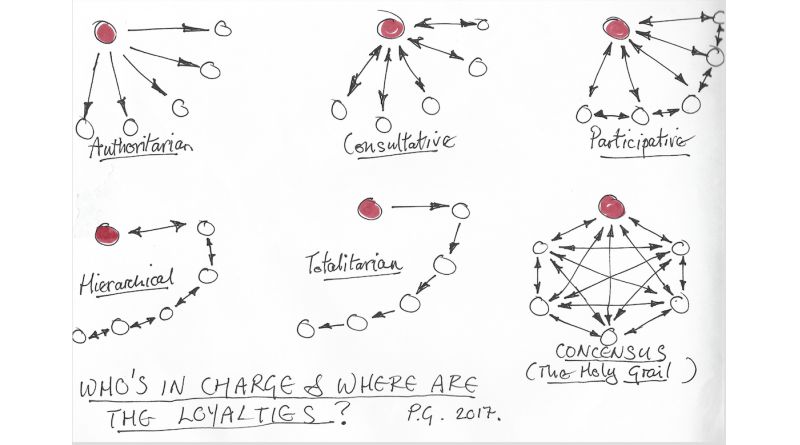“Who’s in charge & where are my loyalties?”
BTG member, Paul Garland, takes a look at hierarchical structures within the building industry…..
Apparently in the UK 80% of the small local Joinery/Carpentry/Building companies we had in 1979 have disappeared. Why this has happened is a serious debate which includes the way we humans relate to each other as individuals in groups at work. How we either succeed in forming good relations or screwing them up or worse, the ways others can screw things up for you, accidentally, deliberately and in a concealed way even.
Some of you will know all this stuff already. Others will have straightforward relations at work and perhaps this will seem a bit theoretical, too complex. However, I have found as time goes by situations do tend to get more complex. This can result in chaos and loss, OR, by attending to the complexity, result in creativity and profit. I have about 30 years experience of making stuff out of wood both alone and in teams, for money as well as for love; it never became simpler or easier. I also did a fair bit of training in management skills and workplace counselling along the way. I am still just about a company director in process of ‘striking off’.
Please refer to the diagrams on the back of the envelope I scanned. The red dot is the ‘leader’. Six is an optimum group number; less than three is not a group and more gets tricky pretty rapidly. If you are making money from carpentry/joinery you are probably dealing with three or more significant individuals, probably more if you include those behind the scenes: Architects, engineers, agents, inspectors, foremen/women, subbies, suppliers etc. These people including you will behave in certain ways in certain situations depending on ‘who’s in charge’, what skills they have and where all their loyalties lie. Don’t be fooled into believing ‘there is no group’. The style of leadership makes a big difference.
As with all trades and learning curves there are stratified layers in the group. You and others will be playing more than one role and wearing more than one cap. I have found it’s important to cut out the middle man, to try to collect and keep all the caps in my own wardrobe where possible. If you have to share your wardrobe (and therefore the caps & profits), it’s really worth studying these relationships of power and influence when you plan decisions and draw up contracts, particularly the ones involving big money and so called ‘agents’. These diagrams are gleaned from other researchers and their experiences as well as my own. They expose situations worth considering, prior to writing or signing contracts, verbal or otherwise. Here are five very well established ‘caps’ in a traditional hierarchy which you can use with my other diagrams to cross refer:
Team Leader, (off the tools, design/procurement etc.)
Lead Carpenter, (production/project manager, on the tools).
Carpenter, (sole trader/journeyman, on the tools).
Apprentice, (committed beginner – we are always one of these – always willing to learn).
Novice / Labourer, (yet to commit hopeful, chancer, wannabe, might be etc.)
I have to keep this to less than 600 words, much discussion and insight has followed from this in the past, I hope it generates more here.
Paul Garland.
Thanks for your thought provoking piece Paul, we at BTG wonder which structure applies to us?



Great article! And indeed management is the main reason why I change workplace so often.